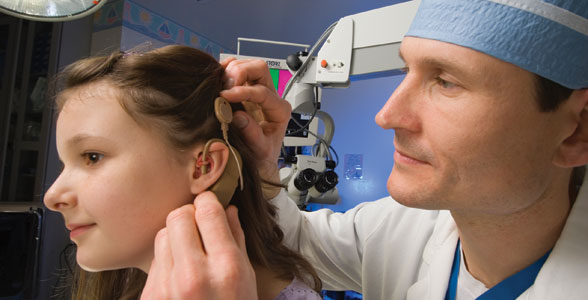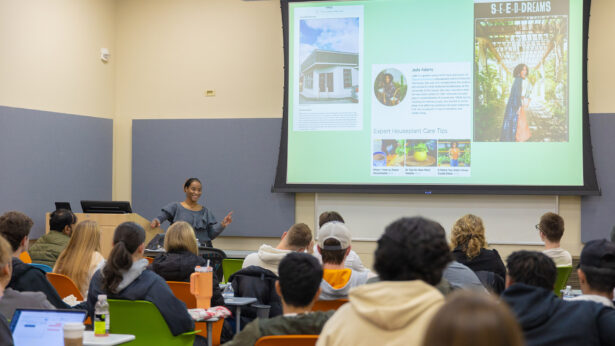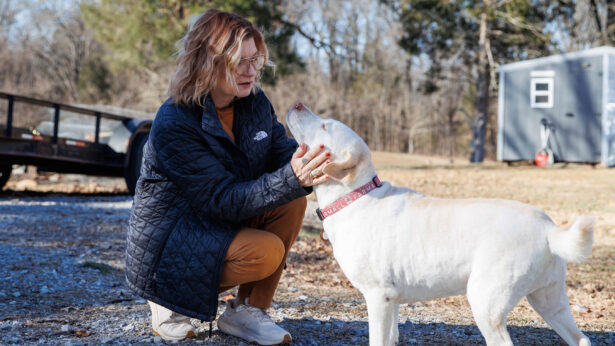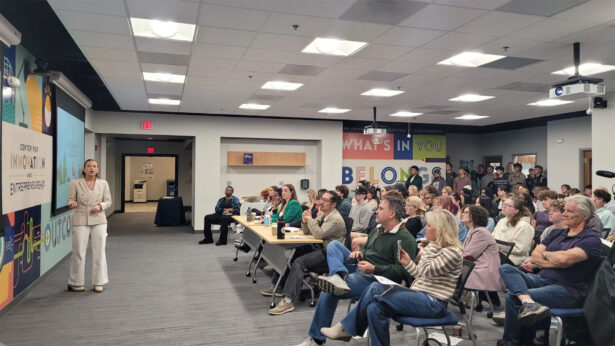Despite an occasional lull in the procedure and conversation about UT sports, the surgical team in the operating room at East Tennessee Children’s Hospital in Knoxville focuses on the task at hand: implanting an electronic device into the inner ear of an 11-year-old boy to help restore hearing to his left ear.
The patient, Wesley Winegar, the son of Jane and Max Winegar of Blountville, Tennessee, is a 5th-grader who enjoys school and loves softball, basketball, camping, and fishing. He received his first cochlear implant in 2001 after a bout of meningitis left him totally deaf. Auditory therapy helped Wesley learn to speak again. The second implant will help in sound localization. “This is especially helpful for communication in noisy environments like school and restaurants,” says Wesley’s surgeon, Dr. John P. Little (Health Science Center ’92).
The device consists of an external processor that transmits sound to the implant in the cochlea, the snail-shaped organ in the inner ear that normally transforms sound from physical vibrations to electrical impulses and sends the information to the brain for processing. Damage from disease or congenital defects can lead to hearing impairment.
Little has performed more than 70 implants since he founded the Pediatric Cochlear Implant Program at Children’s Hospital in 1998. One of only a few surgeons in the state certified to perform the procedure, he completed a fellowship in pediatric otolaryngology at Johns Hopkins University School of Medicine, home to the busiest cochlear implant program in the country.
His interest in otolaryngology was sparked in his gross anatomy class with Dr. Jack Wilson and Dr. Richard Peppler at the College of Medicine of the UT Health Science Center in Memphis. “The complexities of the head and neck, with such a rich collection of nerves and vessels, along with the disease processes associated with them, were intriguing to me,” Little says.
He also credits Dr. Hershel “Pat” Wall, a pediatrician and one of his mentors as well as the chancellor of the UT Health Science Center, with sparking an early personal and professional interest in pediatric medicine. “Children are generally happy, have no self-induced illnesses, and typically bounce back from surgery fairly quickly,” Little explains.
Two summer rotations in the Department of Anesthesiology at the UT Medical Center in Knoxville and a rotation in otolaryngology at the College of Medicine, specifically working with and watching otolaryngologists operate, persuaded him to pursue this specialty. “I had excellent experiences at UT Medical Center and the College of Medicine,” says Little, whose brother Ford Little (Knoxville ’86) is president-elect of the UT Alumni Association. John Little’s interest in ear surgery was further enhanced after spending time with Dr. Michael Glasscock, an internationally renowned otologic surgeon and UT medicine graduate.
Surgery, however, is only one-third of the process of restoring hearing, along with preoperative assessment and follow-up therapy.
Cheyenne Roberts, for example, Little’s first implant patient, was implanted at 2 years of age. She underwent intensive aural habilitation at UT Knoxville’s Child Hearing Services and at age 11 ranks as a top-10 reader in her 5th-grade class. She aspires to be a veterinarian or a teacher and is an avid power tumbler, placing seventh in a national Junior Olympics contest. Cheyenne’s mother, Melissa, says if it were not for the implant and post-implant therapy, Cheyenne would be living in a school for the deaf. “How do you thank a man who gave your daughter a chance to live in the world with hearing people?”
“A frequent comment I get from parents is that cochlear implantation is a miracle,” Little says. “I usually share with those parents that I trust God to perform the miracles; I simply perform a surgical procedure that allows children to hear.”



